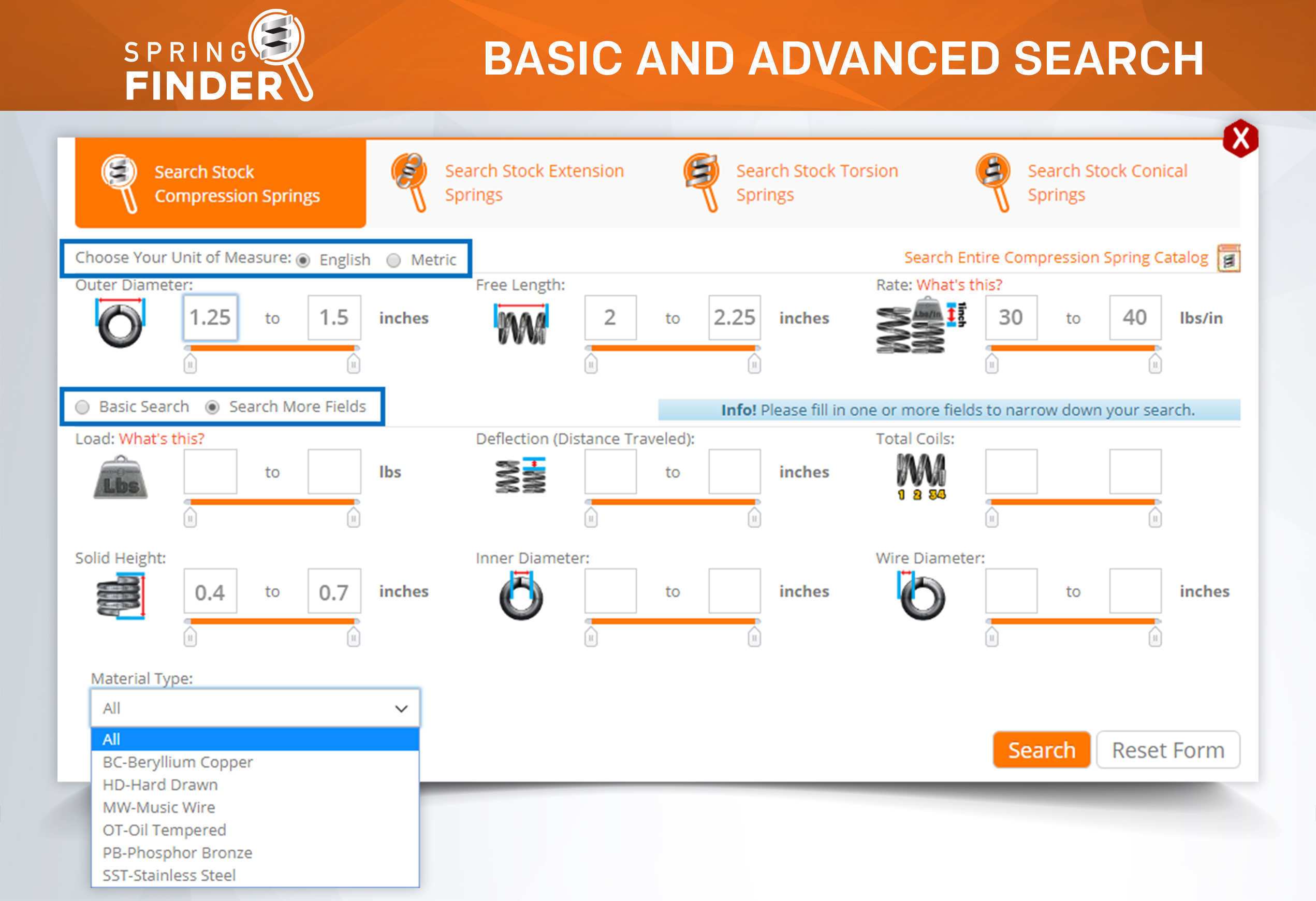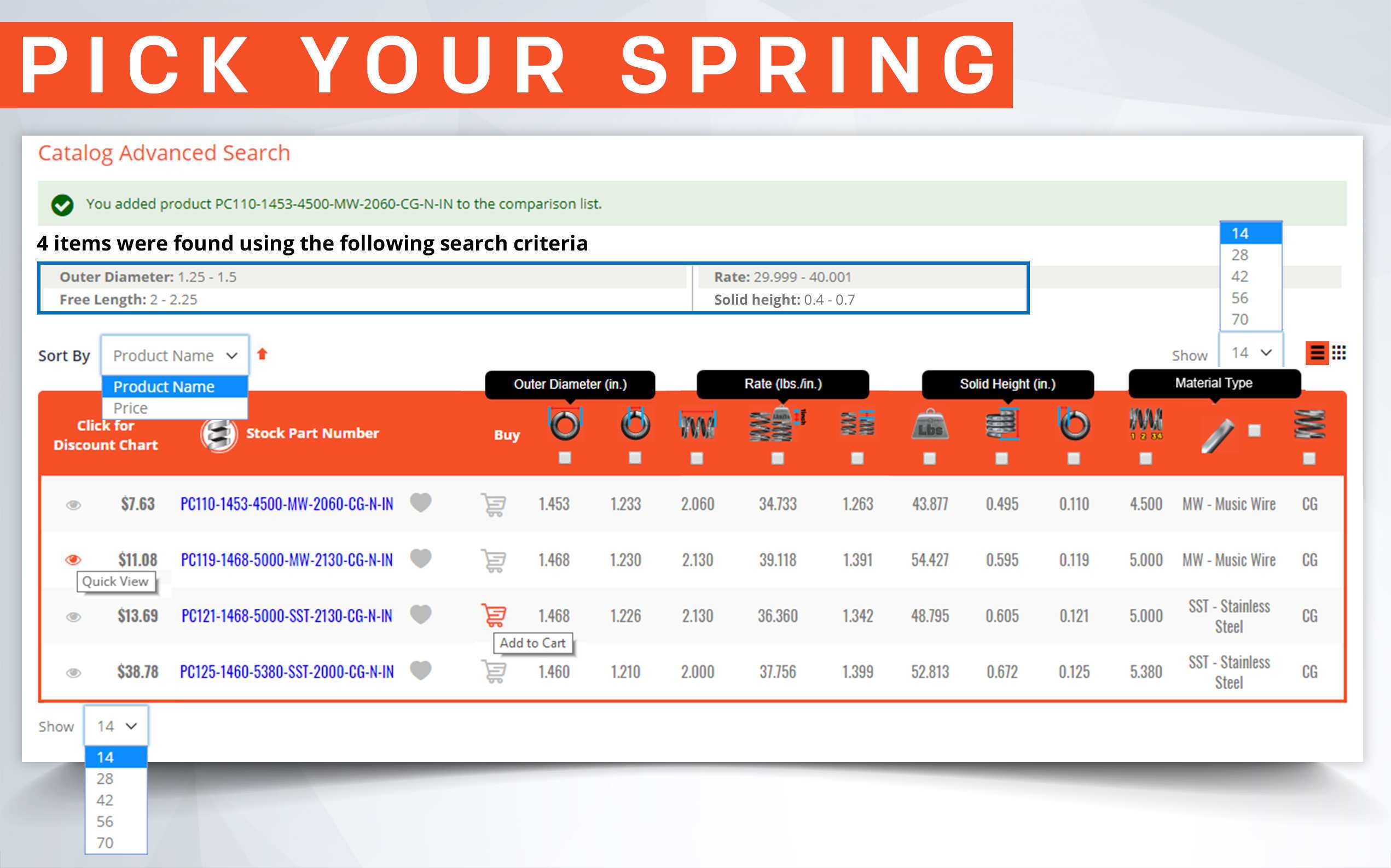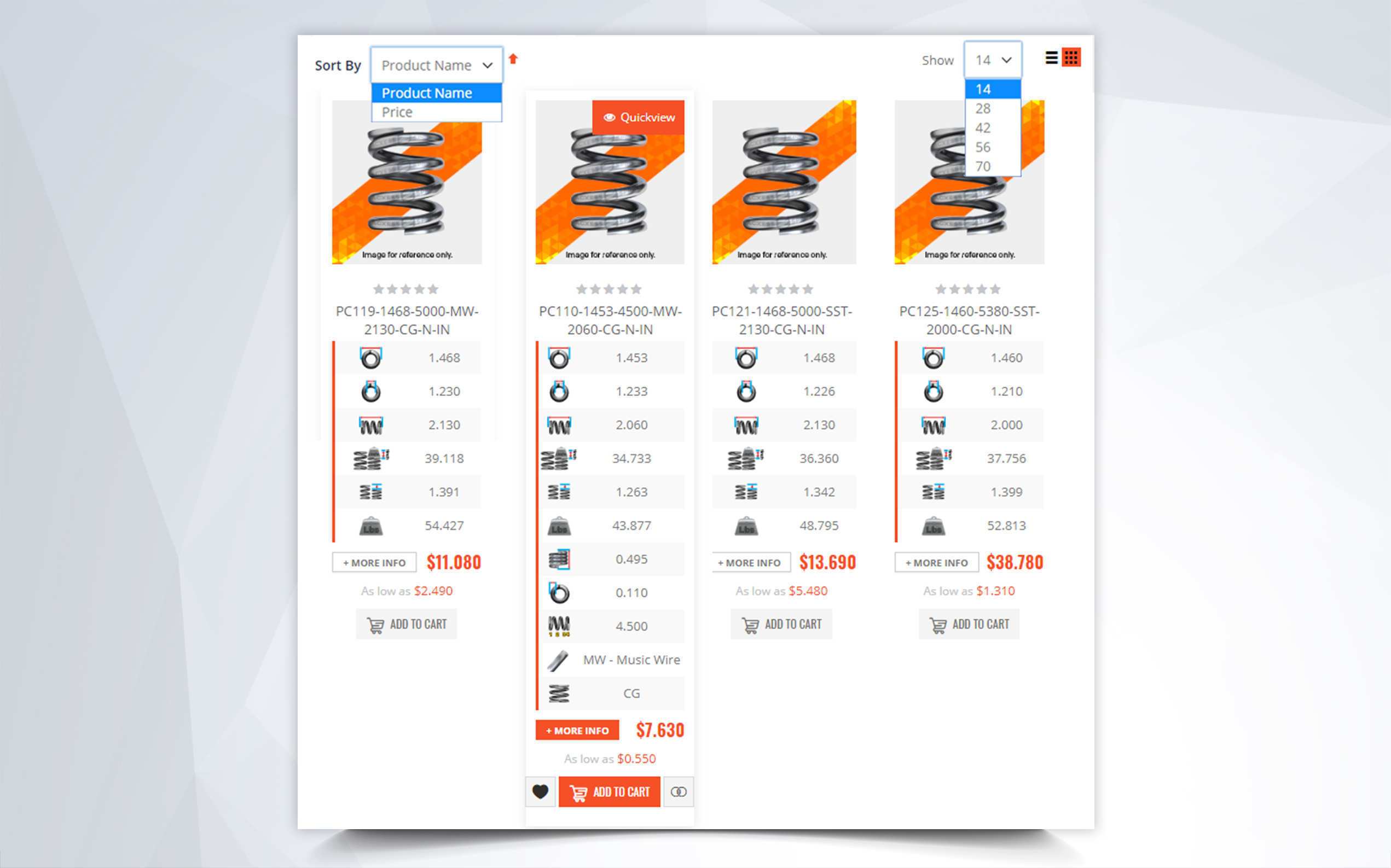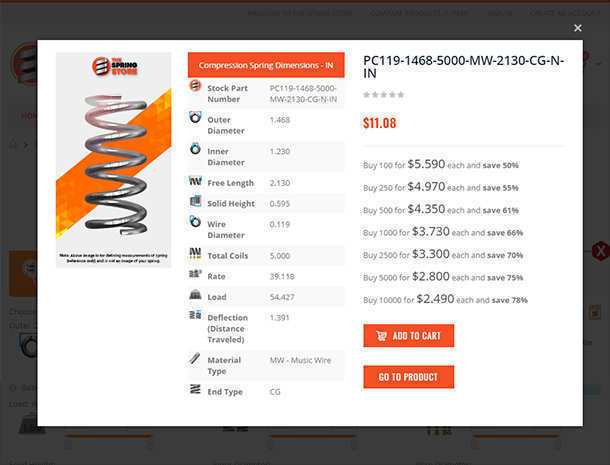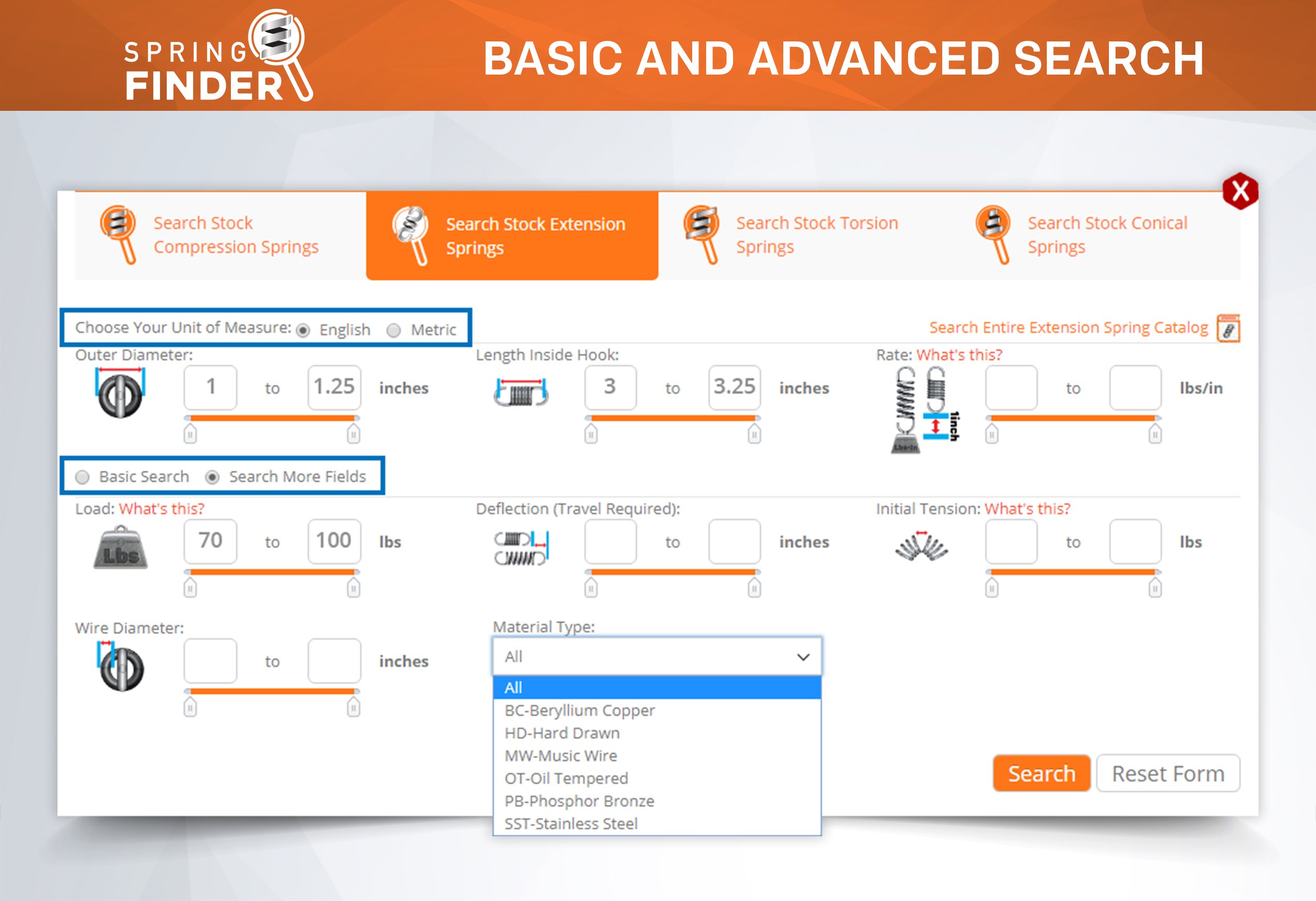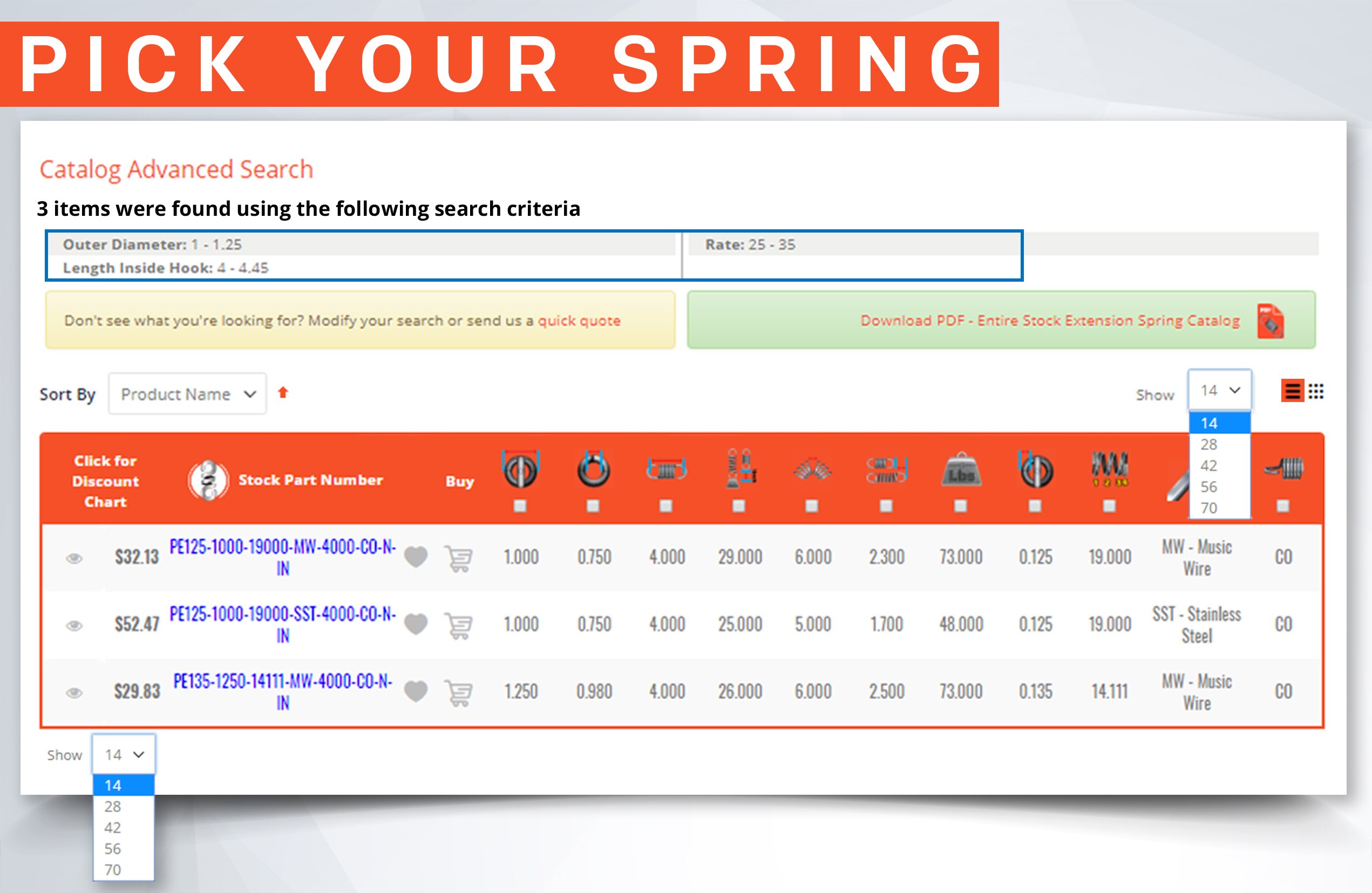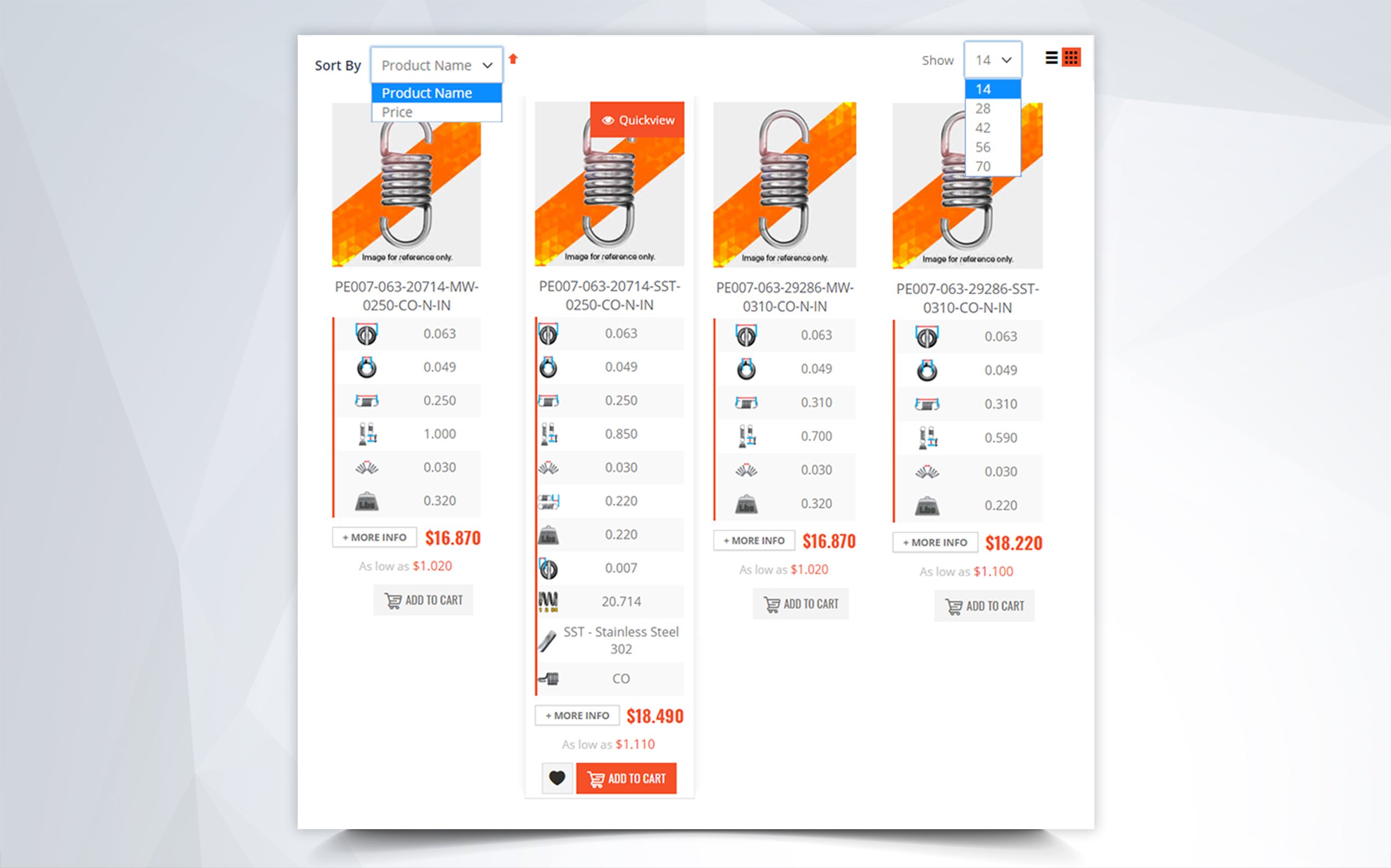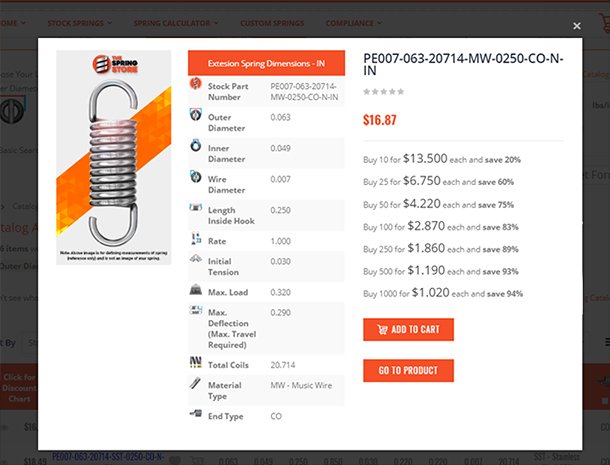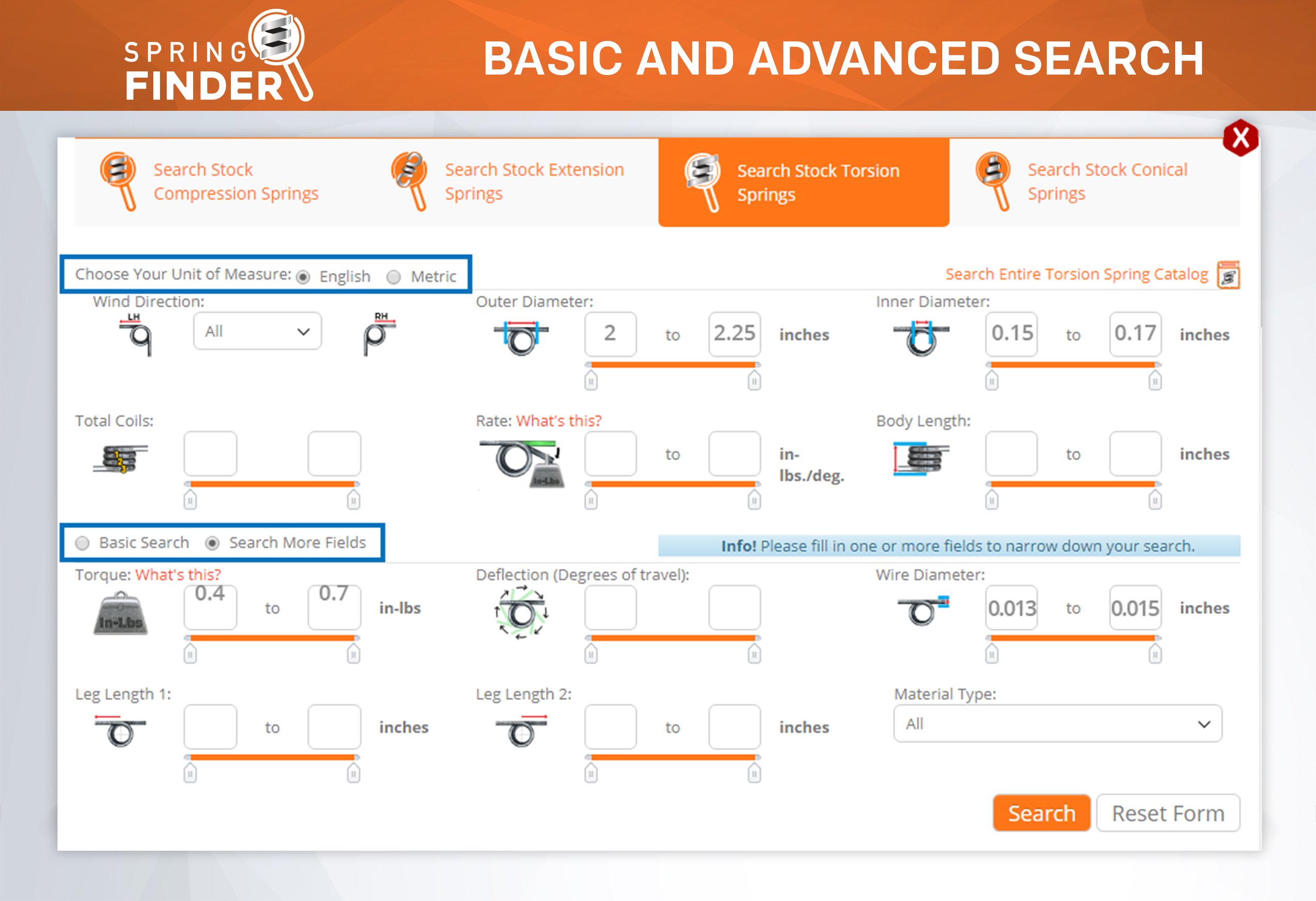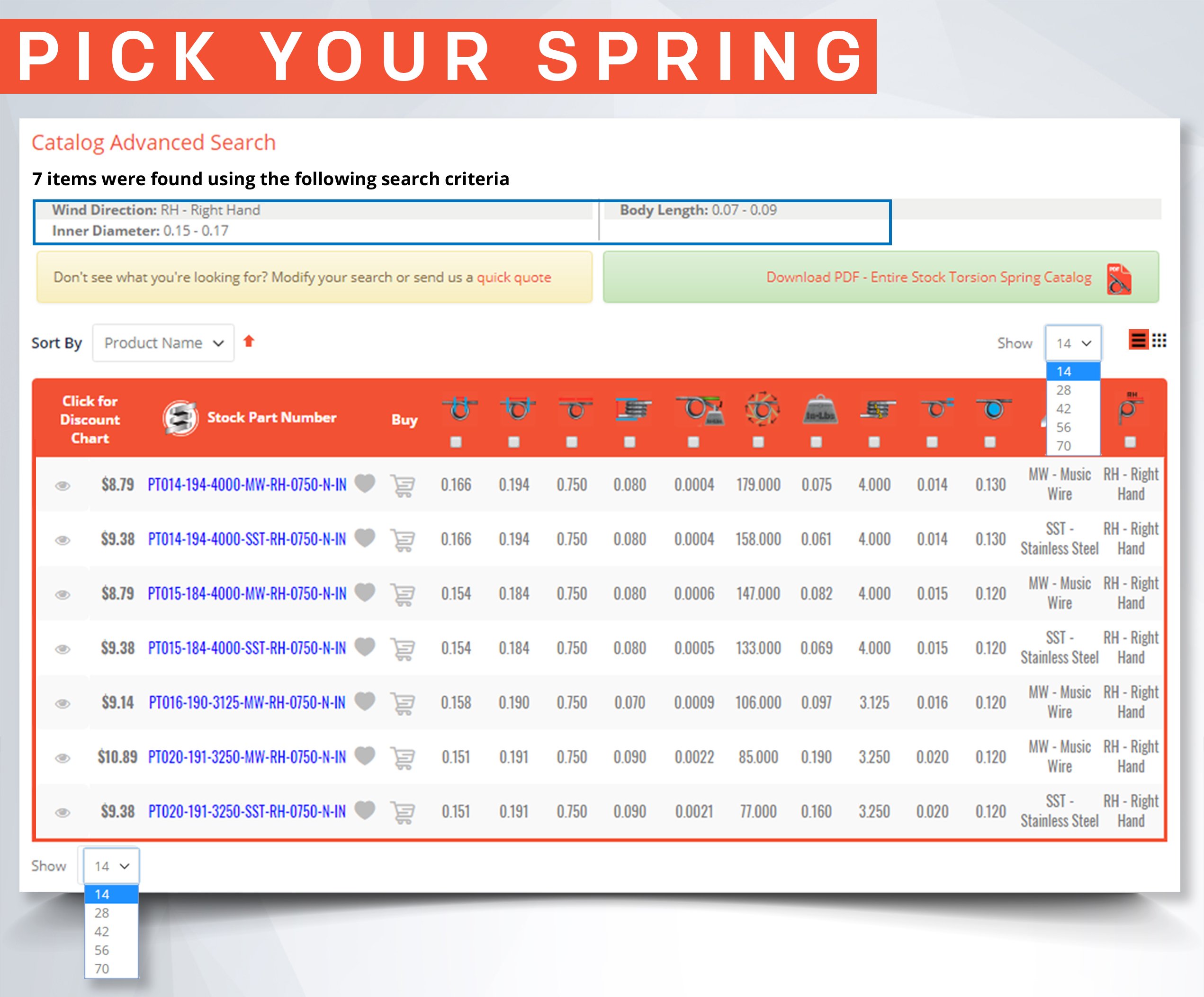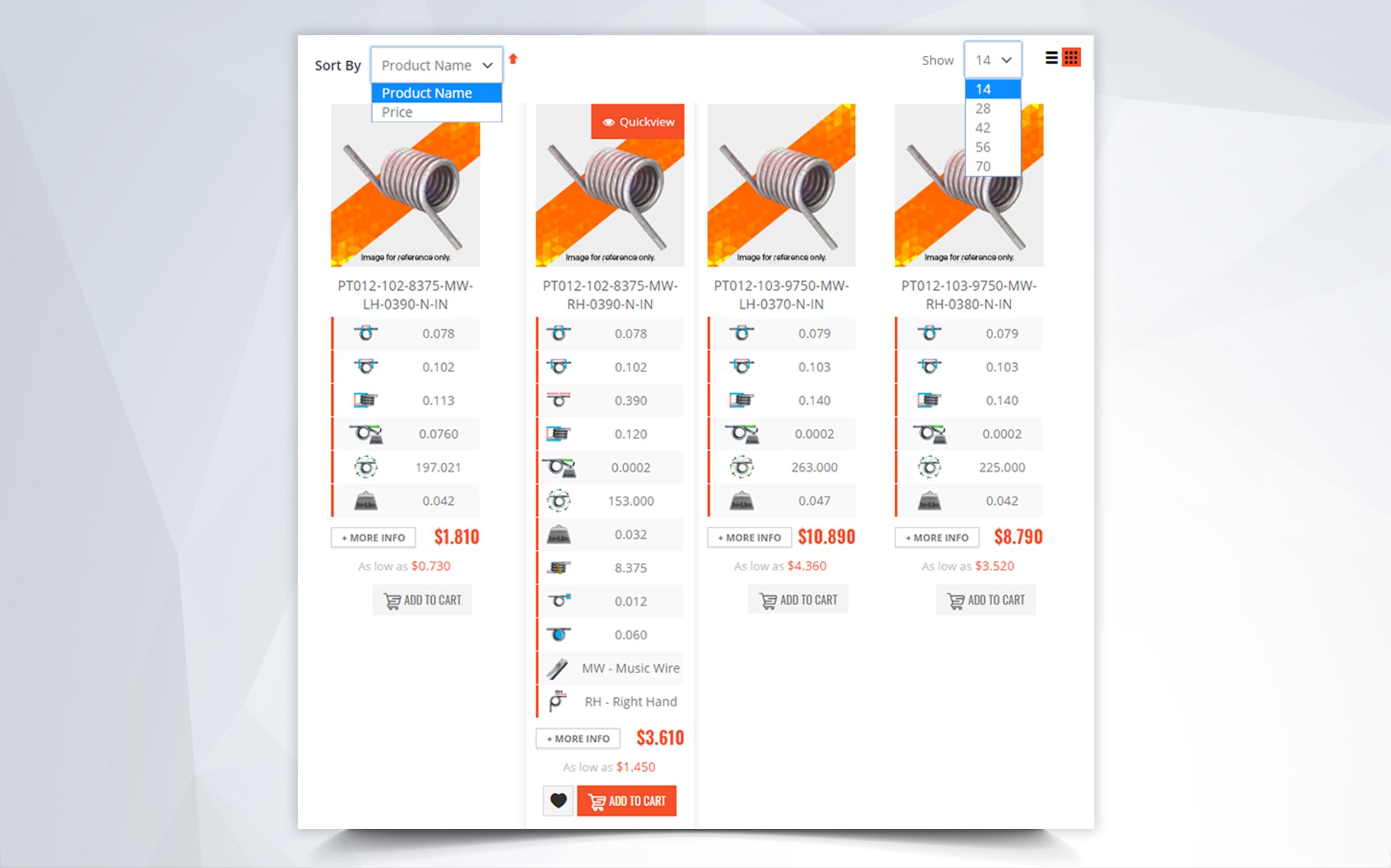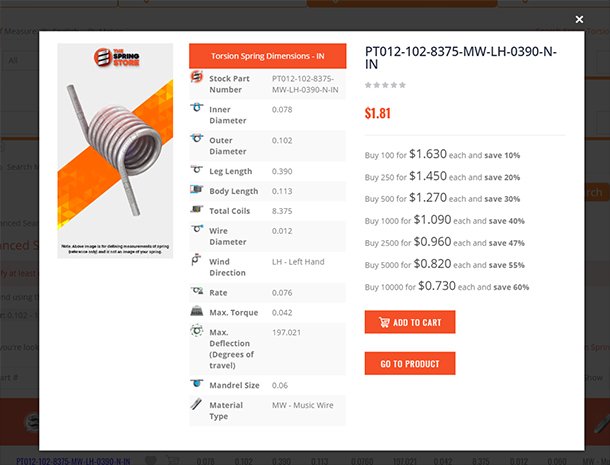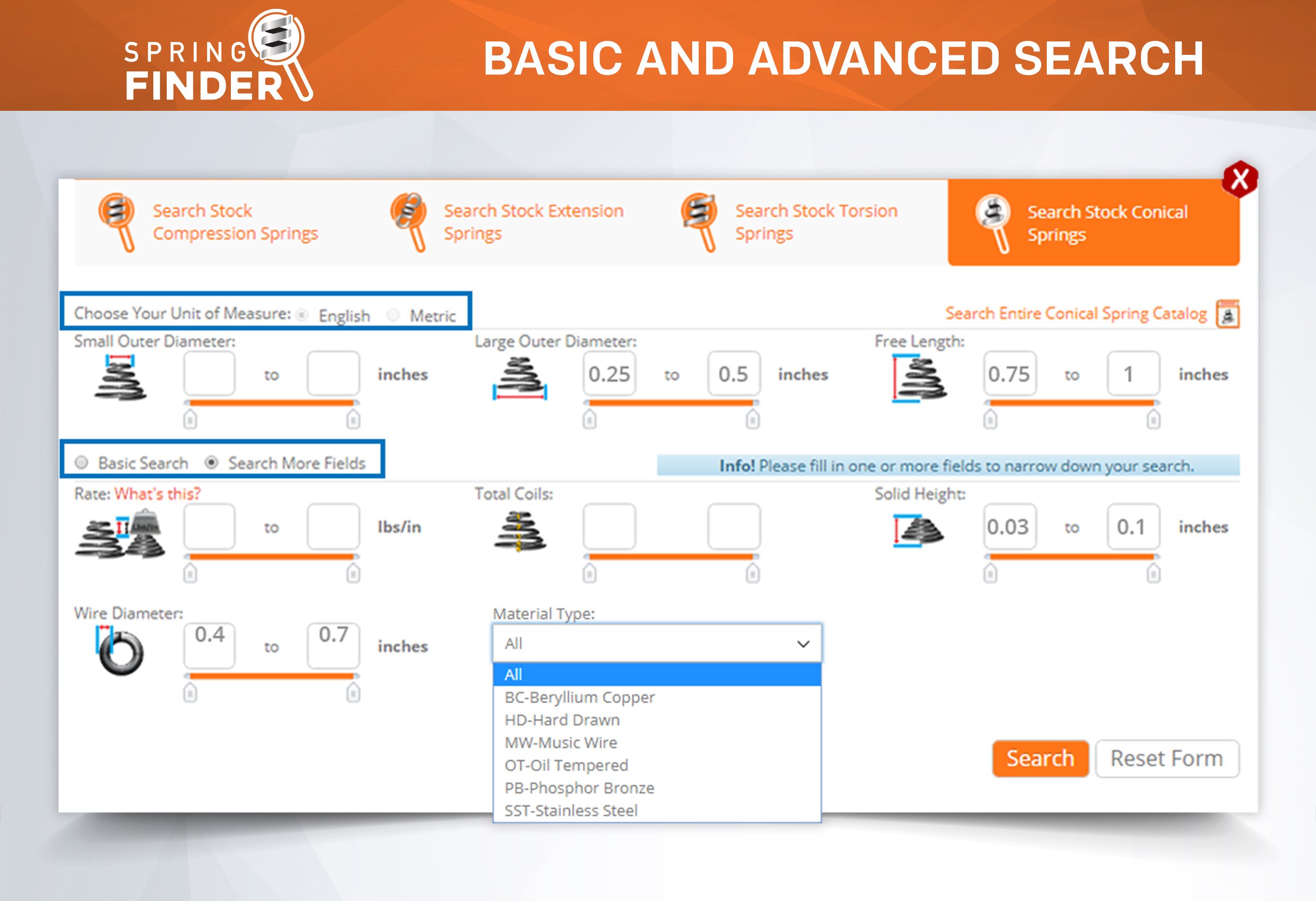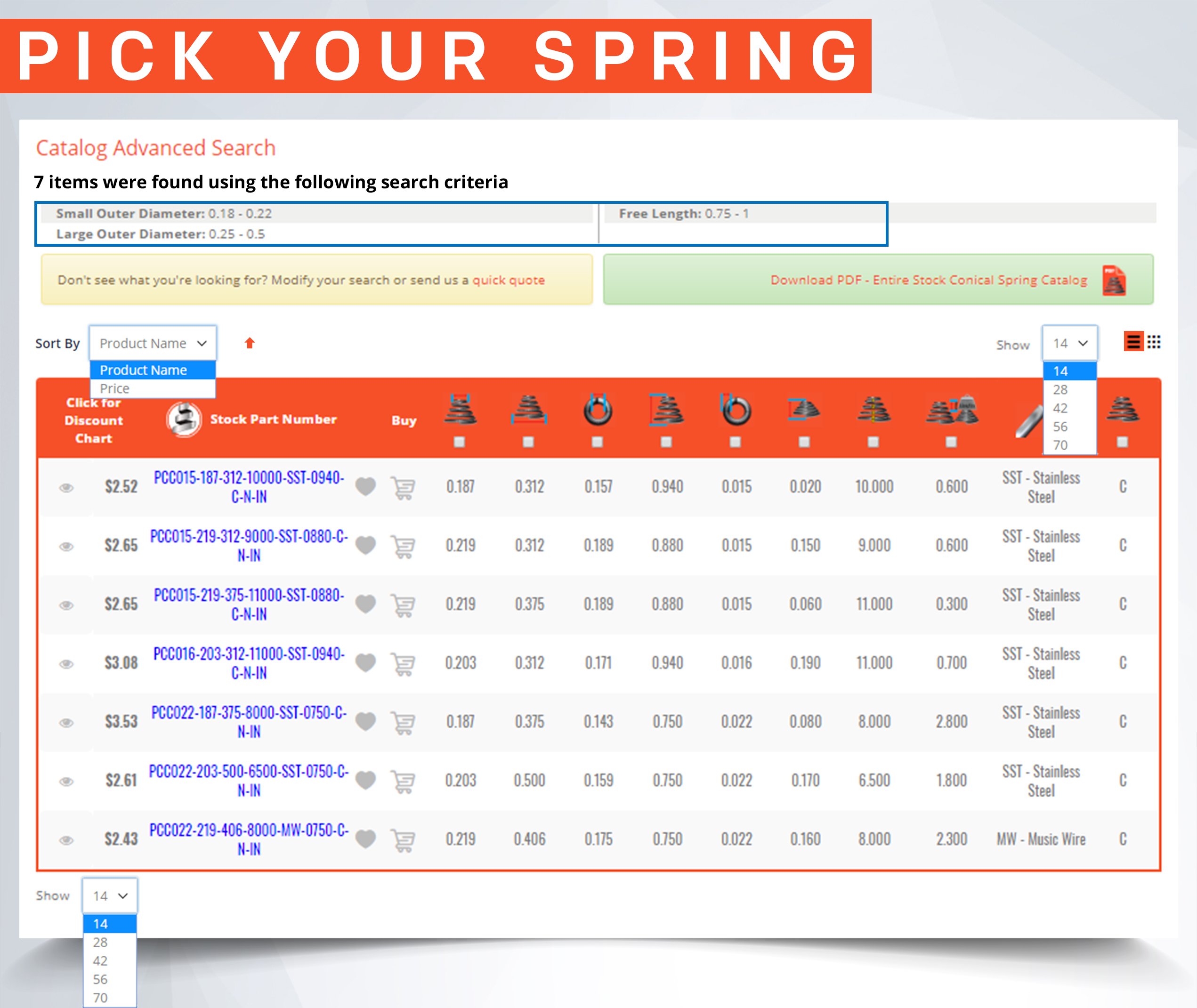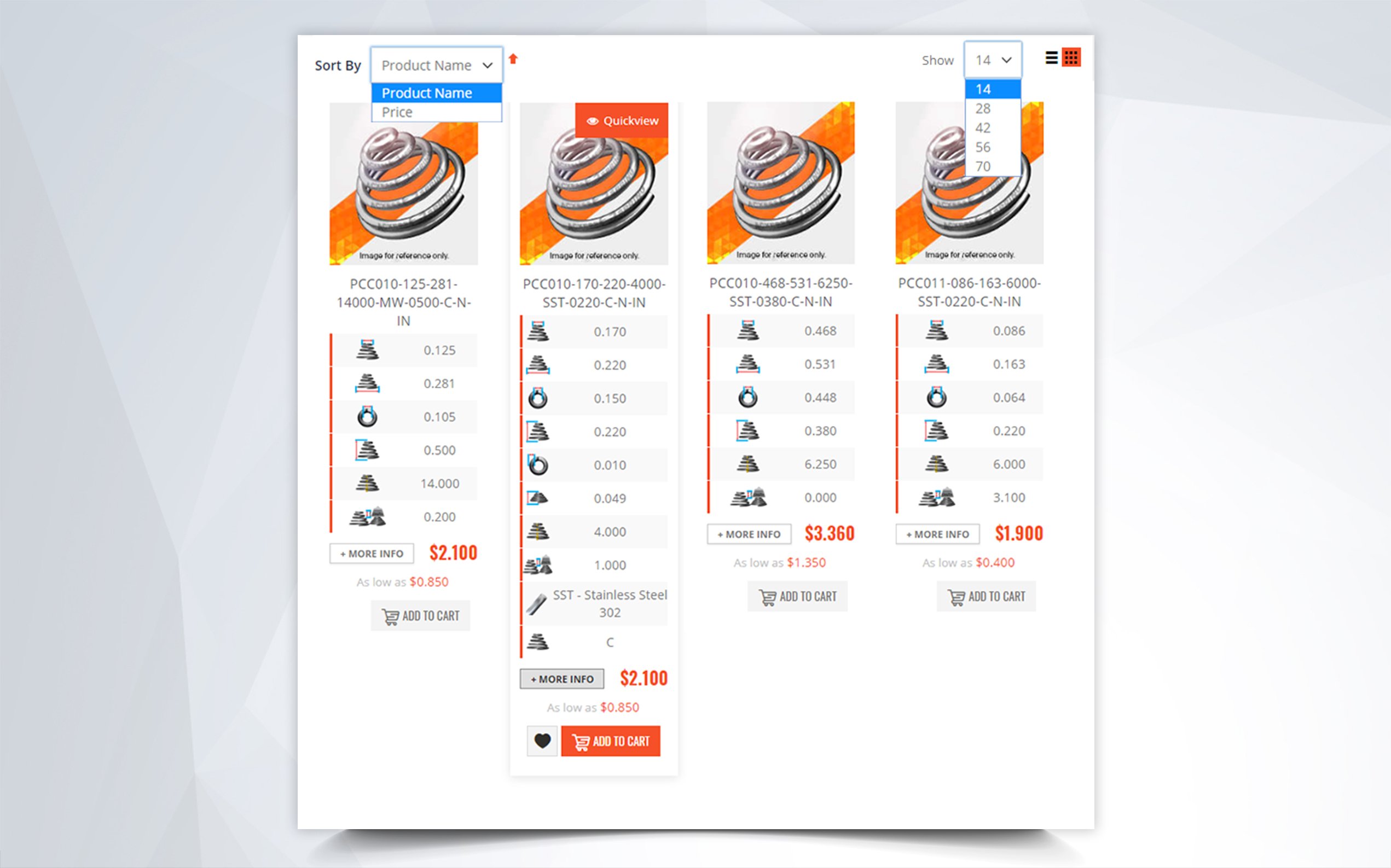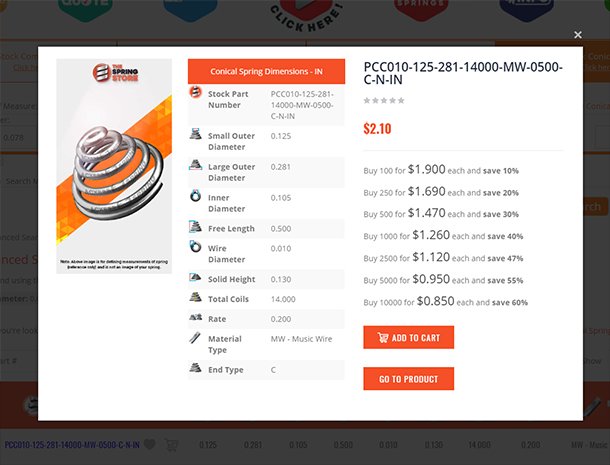Spring Index
What is it?
Definition of Spring Index:
Spring index is the proportion between the wire diameter and coil diameter (how tight the coils are). It can help determine key characteristics of a coil spring and affects its manufacturing complexity. It is a factor that can be quite useful when trying to buy a compression spring for your device.
How to Calculate Spring Index
Step 1.) Calculate Mean Diameter
D = Douter – dStep 2.) Calculate Index
I = D ÷ dExample
D = 1.5" (Douter) – 0.15" (d) D = 1.35 inches I = 1.35" (D) ÷ 0.15" (d) I = 9Key
- I = Index
- D = Mean Diameter
- Douter = Outer Diameter
- d = Wire Diameter
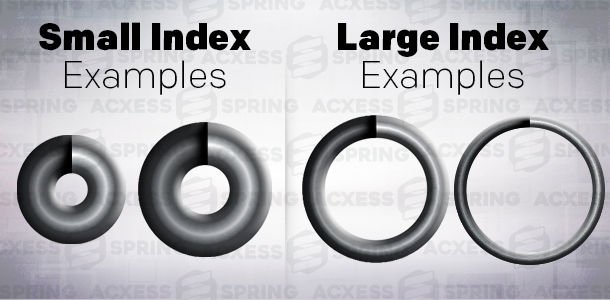
How it affects strength(force)
The index tells you how tight a spring's coils are and it can directly affect the strength of such. A spring with very tight coils tends to have a stronger spring rate. That is why the lower the index, the more strength/stress the spring tends to have. Therefore, the higher the index the weaker the spring tends to be.
Decreasing the outer diameter or increasing the wire diameter will tighten your spring's index and make your spring stronger. However, if you either increase the outer diameter or decrease the wire diameter, your spring's index will grow.
Spring Index and Force Relation
| More Force (Tighter Index) | Less Force (Larger Index) |
|---|---|
| Smaller OD | Larger OD |
| Thicker Wire | Thinner Wire |
| Less Coils | More Coils |
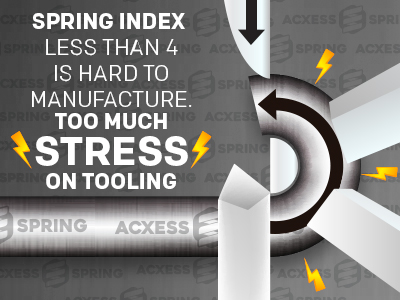
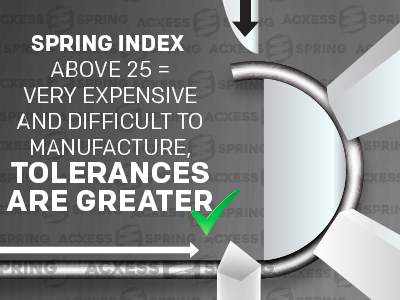
How it affects manufacturing and cost
Most spring engineers can quickly determine if the spring you inquire about is manufacturable by simply looking at the index. Since very tight coils (low index) require special tooling and techniques, they can either cost more due to their manufacturing complexity or be out of the spring supplier's manufacturing capabilities. The same applies for very high indexes where the spring can be quite flimsy and hard to manipulate during the compression spring manufacturing process.
A good spring index range is between 5 and 15. When a spring has an index that falls between this range, it is usually within most manufacturer's possibilities and does not tend to be as tedious to work with. To better understand the relation between spring index and the manufacturing costs, please take a look at the chart below.
| Spring Index | Manufacturing Complexity |
|---|---|
| 0 - 3.9 | Not manufacturable by Acxess Spring. |
| 6 - 12 | Ideal Manufacturing Range. Lower cost. |
| 13 - 15 | Ok, but not great. Might start to increase cost. |
| 15 - 25 | Spring Falls into the “Difficult” category. Higher cost. |
| Above 25 | Hard to manufacture. Greater tolerances needed. Expensive. |






